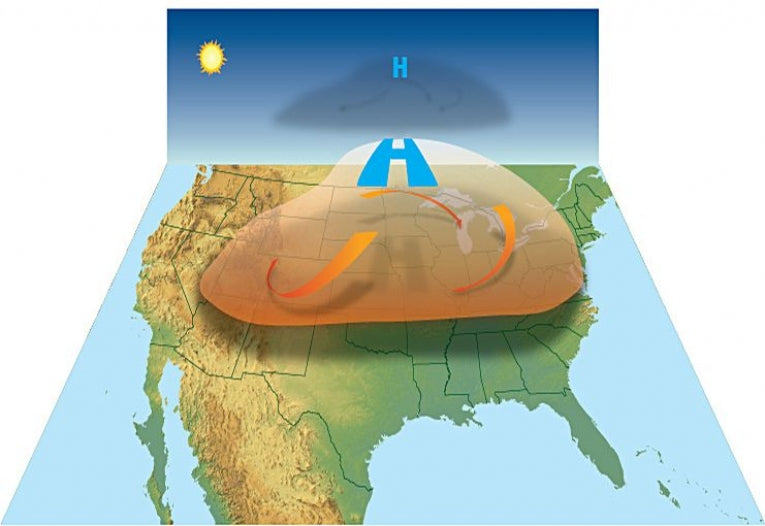With the tiny drop in ocean temperature a few years ago, there was some respite before the great masses of water below start to gain temperature. Now the hit on the land is to come. While Australia and North America had large increases in surface temperatures and drought in 2007 and 2012 respectively, this year's Texan heat is a sign that it ain't going to go away. This paper extracts meaning from the data that implies actual super-heating episodes on 3% of the land surface!
In ten years, we have seen extreme heat waves damaging social order and ecosystems. The whole of Europe in 2003, Greece in 2007, Australia in 2009, Russia in 2010 and North America in 2012, 2011 and it seems right now. The authors quote the lengthy events (several weeks) as 3 standard deviations warmer than the normal climate. The global warming of the last 50 years is causing these events, according to many modelling experiments. With the 1960s having a mere 1% of such events, 10% is now the norm in many years. Records of temperature heights are broken on a monthly basis, indicating an extreme "forcing" of the temperatures upward.
The methods of this study by Dim Coumou and Alexander Robinson of the Potsdam Institute for Climate Impact Research and the Instituto de Geociencias, in Madrid are published in Environmental Research Letters here. They ran 25 simulations, looking at the local standard deviation from climatic norms. The monthly mean surface temperatures for the 20th century over 30 years or more were worked to produce the year-to-year variability. Then the monthly figures for the last 60 years could be extracted.
1951-1980 was a relatively stable global temperature period with which the later figures could be compared. The last 12 years proved to exceed the climatologists extreme level known as 3-sigma in the tropics, Western Europe, the Mediterranean and the Middle East. These make up 5% of the land surface. Upward trends however were observed at 1-sigma (40%) and 2-sigma (15%)in similar areas. The climate models showed similar effects in their results.
High emission scenarios in the model, 2100 sees 3-sigma levels of extreme warming over 85% of the earth. These predictions put summer months in central Asia, the US and all the pre-mentioned 3-sigma areas as having 70% 3-sigma events and above.
While the tropics have actually warmed up more than the areas that have received more publicity, as they have little natural variability, year to year. The Mediterranean is strongly affected in reality and in models of future heating. Strangely the models are unable to show the past heat waves accurately, possibly because the area is drying out, in a long-term trend within the region. The tropics themselves will have frequent extreme 5-sigma events but our attempts at mitigation will be able to reduce this risk it seems. While massive forest fires and many heat-related deaths (ie. infants and the elderly) and losses of harvests will occur, the specific regions can be identified. Using the authors' models, the social and environmental results can be modified by adapting human behaviour.
Of course, international action and international agreement are political devices for some people. The danger is that some regions will be neglected unless we promote mitigation at a much greater level and people are forced to realise exactly what their actions are creating, politically or individually.










